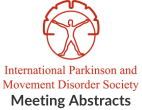Disease-in-a-dish: drug discovery using patient-derived stem cells in Hereditary Spastic Paraplegia
Objective: Identify a drug treatment for Hereditary Spastic Paraplegia (HSP) using patient-derived stem cell models Background: HSP is a neurological disorder characterised by axonal degeneration…The statement about the effectiveness of non-medication methods in the complex treatment of spasticity of different genesis
Objective: Considering polypragmasy and many side effects of drugs, the need for non-drug components of the treatment complex is always relevant. Background: The effect of…Comparative Study of Dry Needling under Ultrasound Guidance and Extracorporeal Shock Wave Therapy for Myofascial Pain and Spasticity Management
Objective: The aim was to conduct comparative study of using dry needling under ultrasound guidance vs ESWT for detecting MTrP and myofascial pain and spasticity…OnabotulinumtoxinA treatment in adults with spasticity reduces caregiver burden: Results from the ASPIRE study
Objective: To examine the impact of onabotulinumtoxinA treatment in adult patients with spasticity on caregiver burden over 2 years from the Adult Spasticity International Registry…Clinical Characteristics that Impact OnabotulinumtoxinA Treatment Adherence in Patients with Spasticity from ASPIRE
Objective: To identify patient demographics and clinical characteristics that impact onabotulinumtoxinA treatment adherence from the Adult Spasticity International Registry (ASPIRE) study. Background: A better understanding…An examination of real-world onabotulinumtoxinA utilisation for the treatment of lower limb spasticity: The Adult Spasticity International Registry (ASPIRE) study
Objective: To explore real-world patterns of onabotulinumtoxinA utilisation in patients with lower limb spasticity over 2 years. Background: OnabotulinumtoxinA treatment for spasticity is variable as…Goal setting for botulinum toxin injections: Impact of the Upper Limb International Spasticity (ULIS) programme
Objective: The Upper Limb International Spasticity (ULIS) programme is a series of observational cohort studies across >30 countries. This analysis explores changes in goal setting…An examination of real-world onabotulinumtoxinA utilization for the treatment of upper limb spasticity: The Adult Spasticity International Registry (ASPIRE) study
Objective: To explore real-world patterns of onabotulinumtoxinA utilization in patients with upper limb spasticity over 2 years. Background: OnabotulinumtoxinA treatment for spasticity is variable, as…“Appropriate Doses Treatment” of IncobotulinumtoxinA in spasticity
Objective: The aim of this study is to object the efficiency and safety of 100 to 1000 units botulinum toxin treatment with modulation of spasticity…Intrathecal baclofen (ITB) therapy in the treatment of severe spasticity: Safety and Product Performance from a Large Multinational Multi-Center Registry
Objective: •To use real-world registry data to augment available safety data, product performance and support overall efficacy. •To utilize registry data to broaden awareness of…
- « Previous Page
- 1
- …
- 3
- 4
- 5
- 6
- 7
- Next Page »
